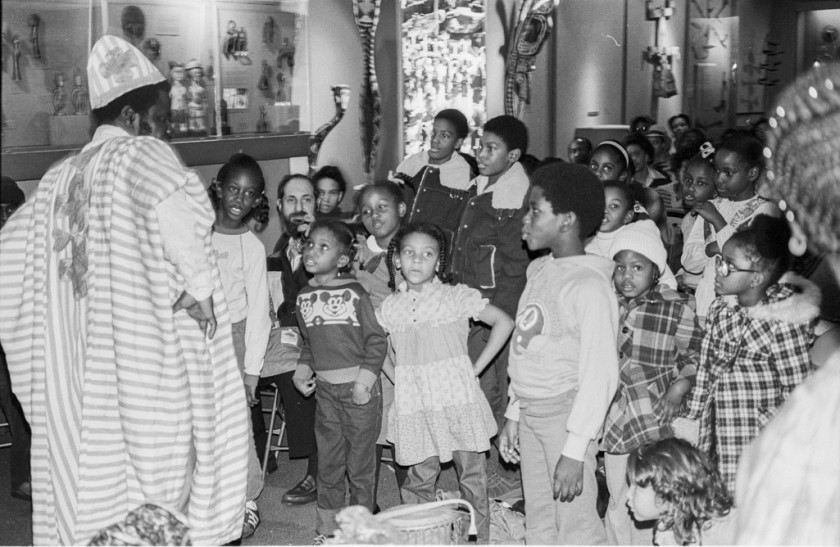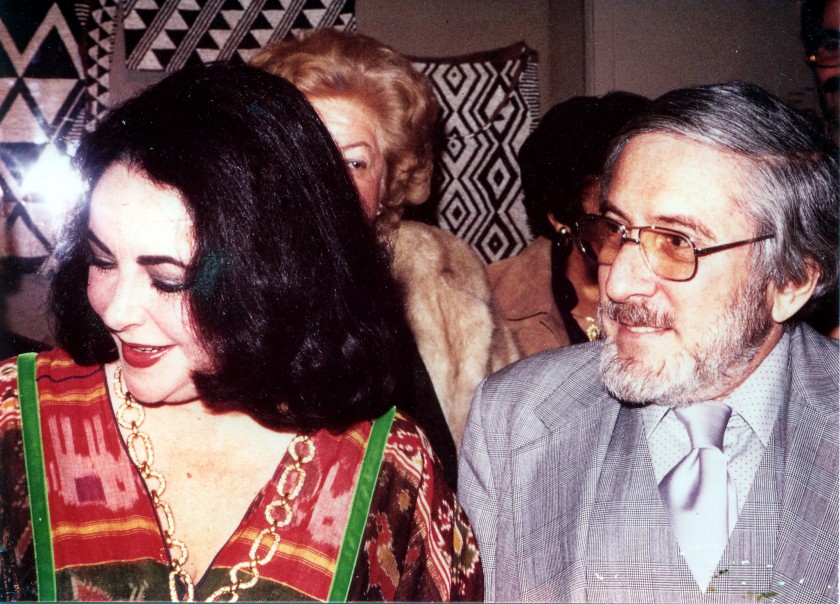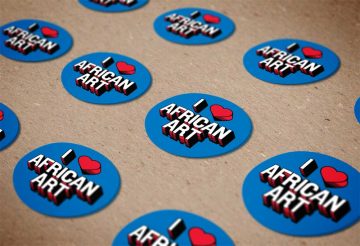National Museum of African Art Marks Its 50th Anniversary in 2014 with Year of Exhibitions and Programs
The Smithsonian’s National Museum of African Art celebrates its 50th anniversary in 2014–2015, presenting a series of public programs and exhibits to commemorate the opening of the original Capitol Hill museum founded by Warren Robbins June 3, 1964, in a townhouse that was originally the home of abolitionist Frederick Douglass from 1871–1877. The anniversary year will honor Robbins’ vision of “cross-cultural communication through education in the arts of Africa.”

History of the Museum
The National Museum of African Art (NMAfA) began as a private educational institution in 1964 to promote cross – cultural understanding through programs in the social sciences and arts.

Photograph by Pekrson
Founded by Warren M. Robbins, a former U.S. State Department diplomat, it was originally known as the Museum of African Art and located on Capitol Hill in the historic townhouse that had been the home of Frederick Douglass, the African American abolitionist and statesman.

In August 1979, by enactment of Public Law P95-414, the museum became part of the Smithsonian Institution.
The museum was officially renamed the National Museum of African Art in 1981, and opened to the public in a new facility on the National Mall in 1987. While it initially focused on the traditional arts of sub-Saharan Africa, over the years, NMAfA broadened its collecting scope, distinguishing itself as the first museum in the United States to include in its mission a sustained focus on modern and contemporary African art.

Through its collections, research facilities, state –of-the –art conservation laboratory, groundbreaking exhibitions, educational outreach and public programs, the museum has expanded the parameters of the field of African art history and presented to the public a rich diversity of artistic traditions from throughout the continent.
Today, the museum’s collection of over 10,000 objects represents nearly every area of the continent of Africa containing a variety of media and art forms.
Timeline of Key Events
1963: Warren Robbins establishes Center for Cross Cultural Communication and acquired the house and acquires the house adjacent to the residence on Sixth Street as its headquarters.
1964: Robbins purchases houses once owned by Frederick Douglass at 314-316 A Street NE and opens the Museum of African Art in stages, acquiring seven additional contiguous houses in the rest of the block incorporate into the museum.
1964 – 1979: Robbins serves as founding director of what was to become the National Museum of African Art.
1964-1979: Robbins shows 30 exhibitions in the Museum of African Art, traveling the exhibitions to 25 universities and museums around the country. During this time, Robbins publishes more than 20 catalogs and publications on the Museum of African Art.
1966: Publication of African Art in American Collections, New York: Praeger.
1973: Eliot Elisofon Photographic Archives established at the Museum of African Art on Capitol Hill.
1979: On August 13, the Museum of African Art on Capitol Hill merges with the Smithsonian and the complex on A Street becomes the National Museum of Art. Comprising of 9 buildings, 16 garages and two carriage houses are presented to the nation. The collections of African and African American art, the library, sales shop, education and graphics center and the Eliot Elisofon Archives are transferred to the Smithsonian by Warren Robbins.
1983: Robbins steps down as first director of the Smithsonian’s National Museum of African Art to become Founding Director Emeritus.
1985: Robbins reestablishes the Center for Cross Cultural Communication as the Robbins Center.
1987: The Smithsonian National Museum of African Art re-opens in its new building on the Mall at 950 Independence Avenue, SW with the Robbins Library of African Art.
2005: The Walt Disney-Tishman African Art Collection is donated to the Smithsonian National Museum of African Art.
Directors at the National Museum of African Art
Africa at 50 Programming

The National Museum of African Art is planning a series of public programs dedicated to the celebration of this historic connection. Through collaborative performing arts, a lecture series, cross-cultural exchange, hands-on art workshops, film screenings, mural painting and additional performances, the Museum wishes to tell the story of Oman’s connection with the East African coast.
Maya Angelou
1928–2014
May 28, 2014
A singular voice has, today, passed from our midst. We were privileged to have known her, honored to have called her friend. It is with deep sorrow that we acknowledge the passing of Maya Angelou, one of the most renowned and influential individuals of our time.
To the world, Maya Angelou, while a multifaceted talent, was perhaps best known as celebrated poet, activist, artist, educator, and historian. To the National Museum of African Art, she was our advocate, our cheerleader, and honorary chair of our national campaign. With people everywhere, we will continue to learn from and be inspired by her exemplary life and work.


